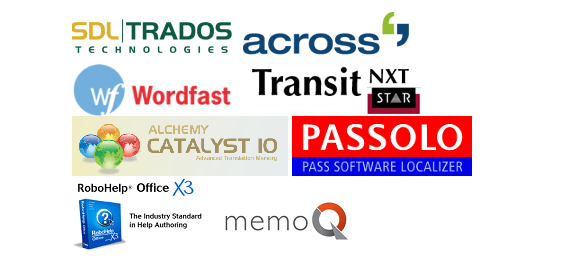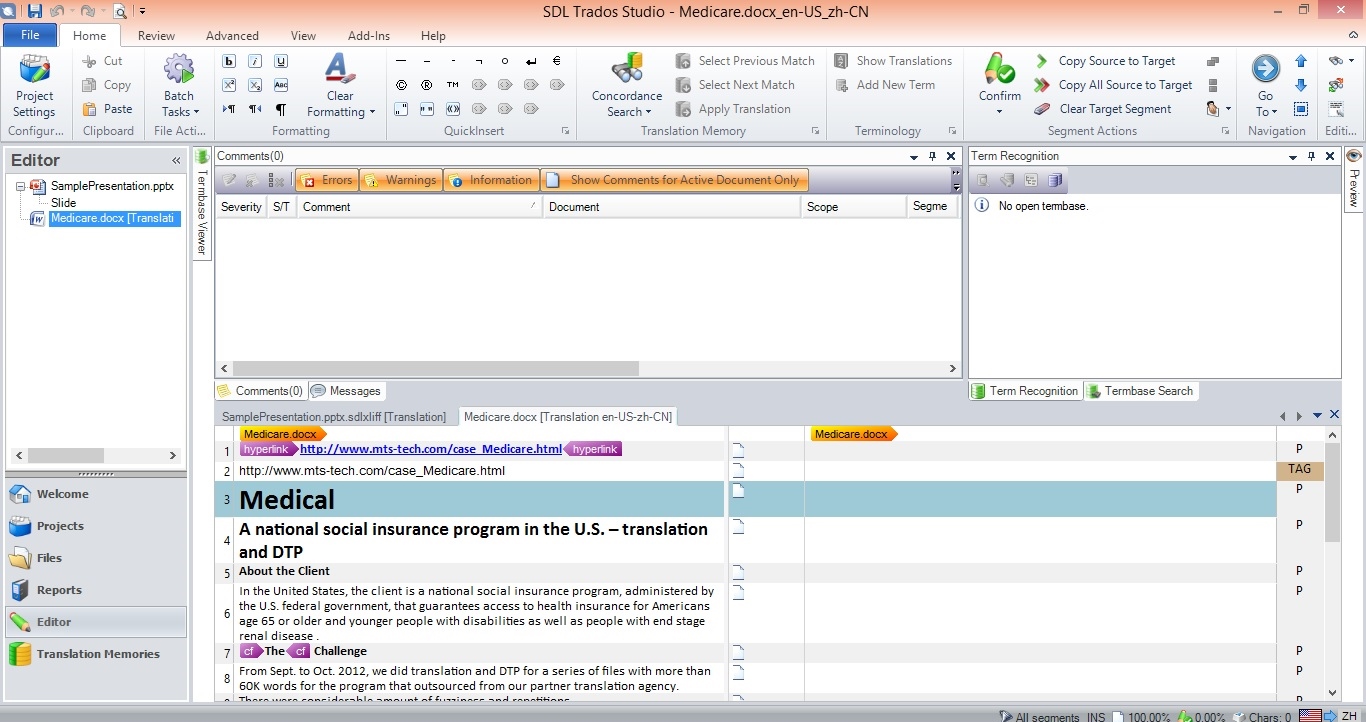
Translation Memory and Computer-aided Translation in Modern Translation Service Companies
Translation is the written conversion of text in the source language to text in the target language. The word is derived from the Latin word translatus, “to carry over”. The first preserved example of translation dates back about 3,300 years ago when the Treaty of Kadesh was written in both Egyptian and Hittite. Just as today, the knowledge of both languages and which words to use to ensure the meaning was preserved in each, was in the minds of the translators.
At about the same time, the first attempts to create a bilingual dictionary were undertaken in what is now modern-day Syria. The cuneiform tables discovered in Elba contain an extensive Akkadian-Sumerian wordlist. Similar documents were developed in many parts of the world over the next 1500 years. While of some use to translators, the bulk of the work was still an exercise in human memory. This continued until the development of the first computers and the storage of translation memory.
Translation memory, TM, is a database of previously translated word groups. These groups can be phrases, sentences or even paragraphs of text. TM is used by translators to aid in the translation and localization of content from the source language to the target language. The software programs that use the translation memory are called Translation Memory Managers, or TMM. More than 85% of modern language service companies make extensive use of these programs.
Many people dealing with foreign languages they don’t know have tried one or more of the free on-line translation sites. These sites, such as Google Translate, Baidu Fanyi and Babel Fish, the three most popular worldwide, make extensive use of TM. For some languages the results can be acceptable. Baidu Fanyi tends to do a better job on Asian source language translations while the others are better with Western languages.
All three are quite limited in function and basically manual in operation. One important limitation is the user cannot specify the context of the use of the word. Especially in technical, legal and medical fields this can present a problem as even common words have different meanings in those areas. For example, the word ‘translation’ most commonly means the conversion of written words in one language to another. However in Physics, the word translation means to move uniformly in a given direction. In Medicine, this same term refers to the transition from one state to another. Without information about the context, these tools should display translations of all possible meanings. Of course, this is not possible in a lot of cases and these simple on-line tools tend to display translations of only the most common meanings of the source text. They are not popular tools for professional language service companies.
Below you can see the logos of several of the more popular, professional TMM programs:
The TMM searches the source document for matching entries in the TM. It then presents the matches to the translator as candidates for the final translation. Some TMM programs look only for exact matches while others employ fuzzy logic (fuzzy matching algorithms) to select translations based on matches that are close to the original source document text. Two factors dictate the effectiveness of these tools – the robustness of the algorithm used and the size of the translation memory. The larger the translation memory the more likely a 100% match will be found.
The main benefits of using professional TMM tools are speed of translation, consistency and accuracy. Translation times can be substantially shortened by the use of these tools, especially when repeated phrases or sentences appear many times in the same or subsequent documents. Using the memory also contributes to the consistency of translation, especially in larger content where multiple linguists may be translating different sections. Accuracy is assured through rigorous quality control of the memory, ensuring only correct translations are entered when new phases are encountered.
Still, much care must be taken in selecting the proper translation from a list of candidates. Knowledge of both the subject matter as well as the culture of both languages is key to the accurate conveyance of the source document meaning into the target language. Too often, the same phrase can have multiple meanings in the source language and hence, multiple possible translations. The translator must understand the meaning of the phrase in the context intended by the author. Many times this requires the linguist have actual work experience or education in the subject matter of the document being translated.
Similarly, many concepts in the source language do not translate easily into the target language. An expert linguist is one who can accurately convey the idea to the target language – this typically requires native or near-native understanding of the target language combined with at least fluency in the source language. Below is a screen shot of one popular TMM program.
Time is money. TMM saves the trained linguist time in several ways. TMM automate the translation of repeated phrases. As the database grows, more and more of the source text can be identified by the TMM and a translation candidate presented to the linguist. Finally, with more robust algorithms that take into account the field of endeavor, less time has to be spent selecting from alternative translations that are not appropriate in that instance. The real power of TMM is realized the more it is used.
TM and TMM have improved greatly over the past 20 years. They help to make translations better and take less time. Still, they are not at a point where untrained linguists can simply run the program to produce a finished translation. If you are considering using a professional language service company to do your translations, here are a few questions you should ask them:
1. Do you use TM and TMM software to assist your linguists in the translation?
2. How long have you been using these products?
3. Do you use these products for only 100% match translations or do you utilize a fuzzy matching algorithm?
4. What is your discount structure for matched phrases?
5. Are your linguists native speakers in the target language?
6. How much real-world experience do they have in my industry?
7. For how many other customers in my industry have they worked?
Using these questions to evaluate language companies will help you ensure your translations are well received by your target audience.


